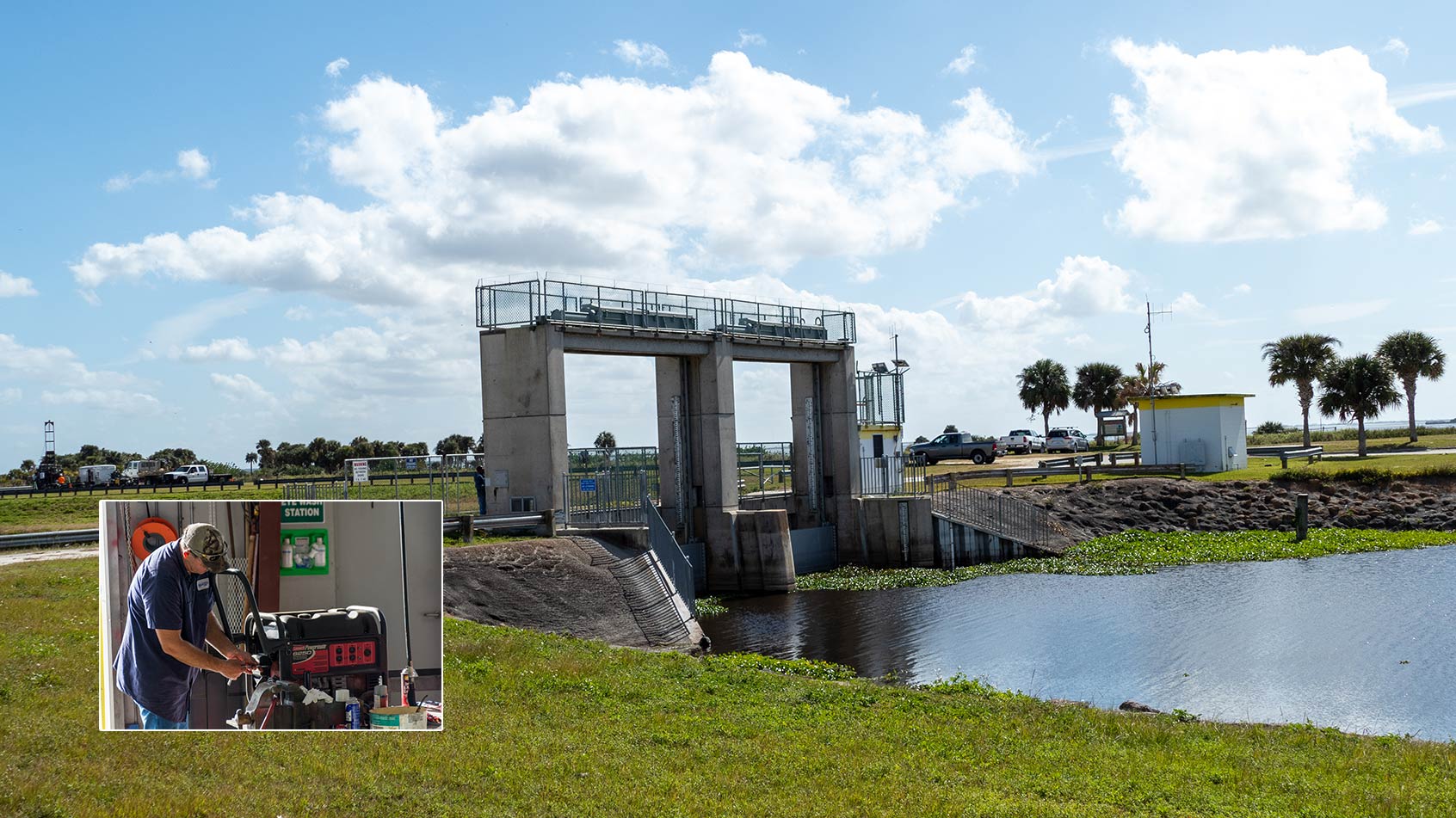Now is the time to prepare for Florida’s rainy, storm season
May 5, 2022
The S-96 water control structure, Upper St. Johns River Basin. Inset, a District trades worker preps a generator to be ready for hurricane season.
June 1 officially marks the beginning of hurricane season and forecasters predict it will be very busy. Now is the time to get ready to minimize flooding as the inevitable rains come our way.
Rain and periodic flooding are natural conditions for Florida but could impact people and property. As part of the St. Johns River Water Management District’s work, we are focused year-round on resiliency and flood protection as one of our core missions. This work is focused on restoring and protecting coastal wetlands to store floodwaters and slow storm surges. It also includes regulating wetland impacts and stormwater system construction, and operating flood control systems at the headwaters of the St. Johns River in Brevard and Indian River counties and the Harris Chain of Lakes in Lake County.
Our staff train year-round for emergencies. As hurricane season approaches, we are inspecting and conducting maintenance on equipment and preparing teams who help respond to emergencies, as well as testing and updating internal plans that guide our work. We are also coordinating with our local government partners, who are the primary entities responsible for land use planning, maintaining stormwater systems, implementing a community’s master stormwater plan as well as retrofit projects for areas built prior to the state’s stormwater rules. We likewise work closely with the state to assist in Tallahassee.
Here’s what you can do at your home or business to prepare:
- Report clogged culverts or slow-moving water in ditches to your local government to allow adequate time for maintenance or repairs before a storm.
- Keep grass clippings and other debris out of stormwater drainage systems to prevent clogging and loss of stormwater storage and treatment capacity.
- Clean out gutters and extend downspouts at least four feet from structures.
- Build up the ground around the home to promote drainage away from the foundation.
- Remember, if you are experiencing flooding, your first call should be to your local government.






